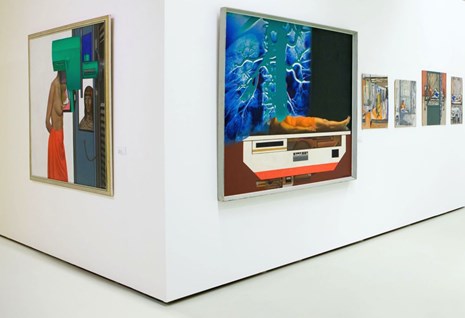Marija Teresė Rožanskaitė

Marija Teresė Rožanskaitė. X-Rays
The oeuvre of Marija Teresė Rožanskaitė (1933-2007) stands out in the context of modern Lithuanian art. The artist became famous for her "medical" paintings: scenes of heart operations, x-ray laboratories and hospitals. The process of looking is very important for her: not only looking at the painting, but also through it, into the opened-up internal spaces of the work. The gaze of the viewer, the characters, and the devices observing them all cross on the canvas. The exhibition is constructed like an x-ray machine that radiographs both the artist's work and its viewers.
Rožanskaitė not only diagnosed the ills of Soviet society, but also documented fateful historical events: deportations, which she experienced herself, the resistance, a hostage crisis. In her paintings, assemblages, actions and installations, she portrayed marginal situations and uneasy spaces that contained clear signs of the clash of people and machines, of individuals and society. In capturing moments of existential change, birth, illness and death, she used sharp colour combinations, photorealist Pop Art aesthetics, and found objects.
The key themes and distinctive traits of Rožanskaitė's work are illustrated in the different sections of the exhibition:Between Space and Abstraction,Medical Spaces,The Other Side of the Mirror,The Stations of the Cross,Assemblage Architecture,The Ethnographic GazeandAn Ear for Ecology. The artist's works are like x-rays of an unembellished reality that look all the more relevant today.
Curator: Laima Kreivytė
Designer: Julija Reklaitė
Sponsor: Culture support foundation of the republic of Lithuania
Exhibits have been kindly lent by artist's family


